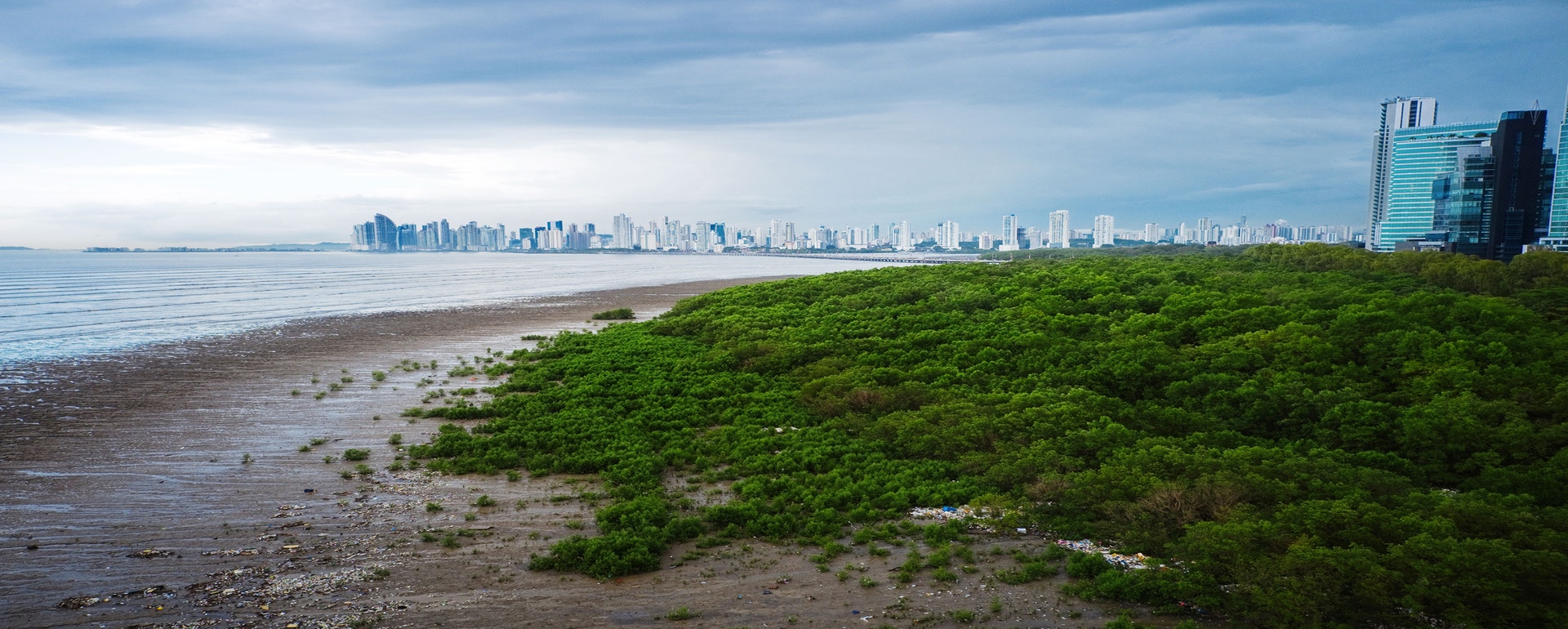
La página que intenta visitar sólo está disponible en inglés. ¡Disculpa!
The page you are about to visit is currently only available in English. Sorry!

The flyways of the Americas converge along the thin isthmus that connects the continents. Each year millions of migratory shorebirds fuel their journeys in Panama’s rich mudflats and mangrove forests, making this small country tremendously important to migratory avifauna.
Panama Bay alone hosts a third of the global population of Western Sandpipers, a fifth of the world’s semipalmated Plovers, and dozens of other North American migratory bird species. But away from the coasts, Panama has a wide range of other important bird habitats—humid jungles, dry deserts, and 11,000-foot-high cloud forests—that host more than 1,000 bird species.
Unfortunately, Panama’s wildlife-supporting ecosystems face many threats, including unsustainable development, polluted runoff, and root-strangling trash.
The National Audubon Society has been working to support science and conservation action across Panama since 2006, in partnership with the Panama Audubon Society (our BirdLife International partner), government agencies, and the private sector. Our key focus areas include…
Bay of Panama
Bay of Parita
Chiriquí
With 2,490 km (1,550 miles ) of coastline, Panama is a focal point for Audubon’s coastal resilience strategy, which aims to restore or improve the management of 1 million hectares (2.5 million acres) of coastal bird habitat in Latin America and the Caribbean. In Panama, we’re working to mainstream nature-based and green infrastructure solutions into national and regional planning and policy, to encourage smarter development and preserve the services that intact coastal ecosystems provide.

We’re prototyping this strategy via a project that will protect and enhance the coastal natural capital of Panama. The project, a collaboration with the Inter-American Development Bank and the Panama Audubon Society, will help Panama to:
Audubon is collaborating with the Inter-American Development Bank and our local partner the Panama Audubon Society on a three-year, $2.3 million project that supports carbon capture, biodiversity, human well-being, and coastal resilience. The project aims to elevate the importance of Panama’s coastal mangrove ecosystems and related wetlands, the carbon they sequester, and the biodiversity and livelihoods they support by shifting perceptions of the value of natural capital.
We are achieving this goal through a multi-pronged approach that includes:
These efforts will be applied in the Bay of Panama, with its mosaic of urban landscapes and mangrove habitat, and the Bay of Parita, a rural landscape in a state of transition. The Blue Natural Heritage project (Patrimonio Natural Azul) lays the technical and scientific foundations to support the Panama government’s climate agenda, as it carries out an aggressive review and update of its climate policies. Our project informs current international commitments such as Panama’s Nationally Determined Contribution (NDC), by developing methodologies and baselines for blue-carbon accounting and potential mangrove restoration. It also justifies more ambitious climate-related efforts by helping to develop policies and management capacities. It supports the development of a blue carbon market and other instruments derived from climate change policies.
The National Audubon Society and the Panama Audubon Society have teamed up to improve coastal wetland conservation in the Bays of Panama and Parita. These habitats on Panama’s Pacific coast offer some of the most important stopover and wintering habitats for neotropical migrant shorebird species in the Americas.
The initiative includes analyses of shorebird population levels and efforts to prevent the loss of mangrove cover in the Bay of Panama. It also supports the development of a conservation plan for the Bay of Parita that engages key stakeholders, identifies threats, and plots a path for future conservation efforts. Finally, it addresses coastal solid waste—in particular plastics that are killing off mangrove forests, reducing roosting habitat, and presenting a direct threat to shorebirds through ingestion.
Audubon and its partners are building momentum and public commitment to bird conservation by engaging one million people across the hemisphere. Our efforts in Panama center around the Aulas Verdes (Green Classrooms) program, presented by our local partner, the Panama Audubon Society. The program’s goal is to make conservation relevant to generations of future Panamanian voters, scientists, and decision-makers.
Developed in 2009, Aulas Verdes is the Panama Audubon Society’s signature environmental education program. Via field trips and weekly hands-on activities, schoolchildren experience nature and learn how local ecosystems support birds, fish, and other biodiversity found in and around the Bay of Panama. The program, active in 25 schools and serving more than 3,500 students each year, recently expanded its coverage to the Bay of Parita, and has reached more than 24,720 primary school students in 18 schools. The National Audubon Society is proud to support this program.



Let us send you the latest in bird and conservation news.
